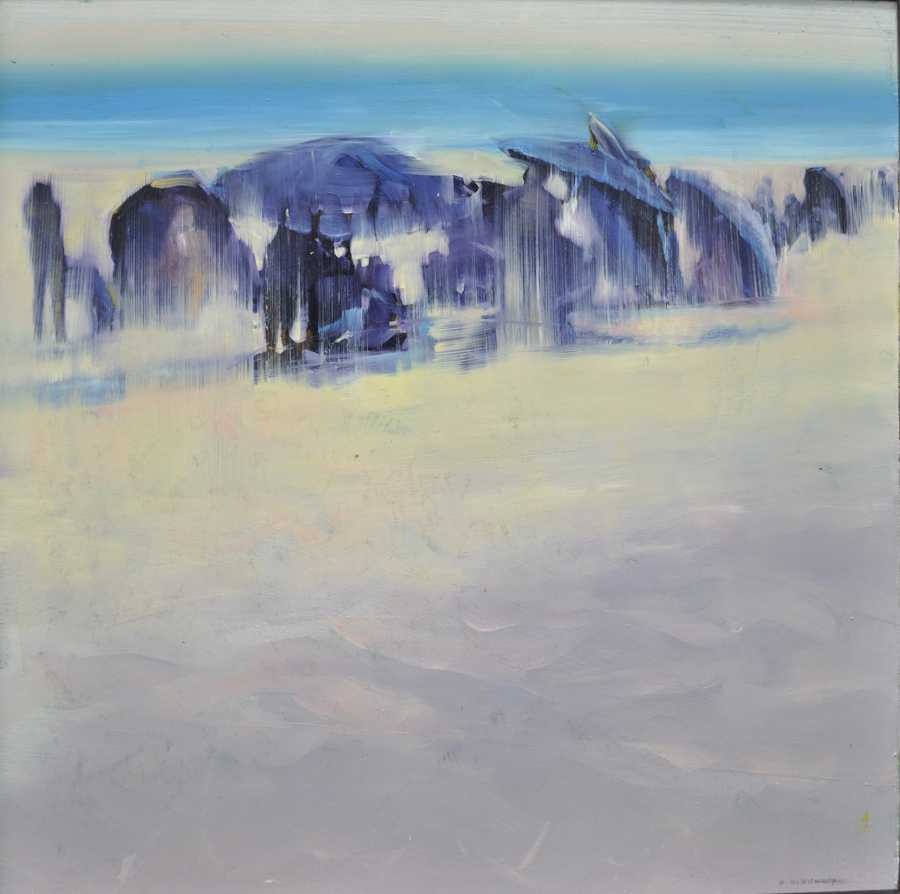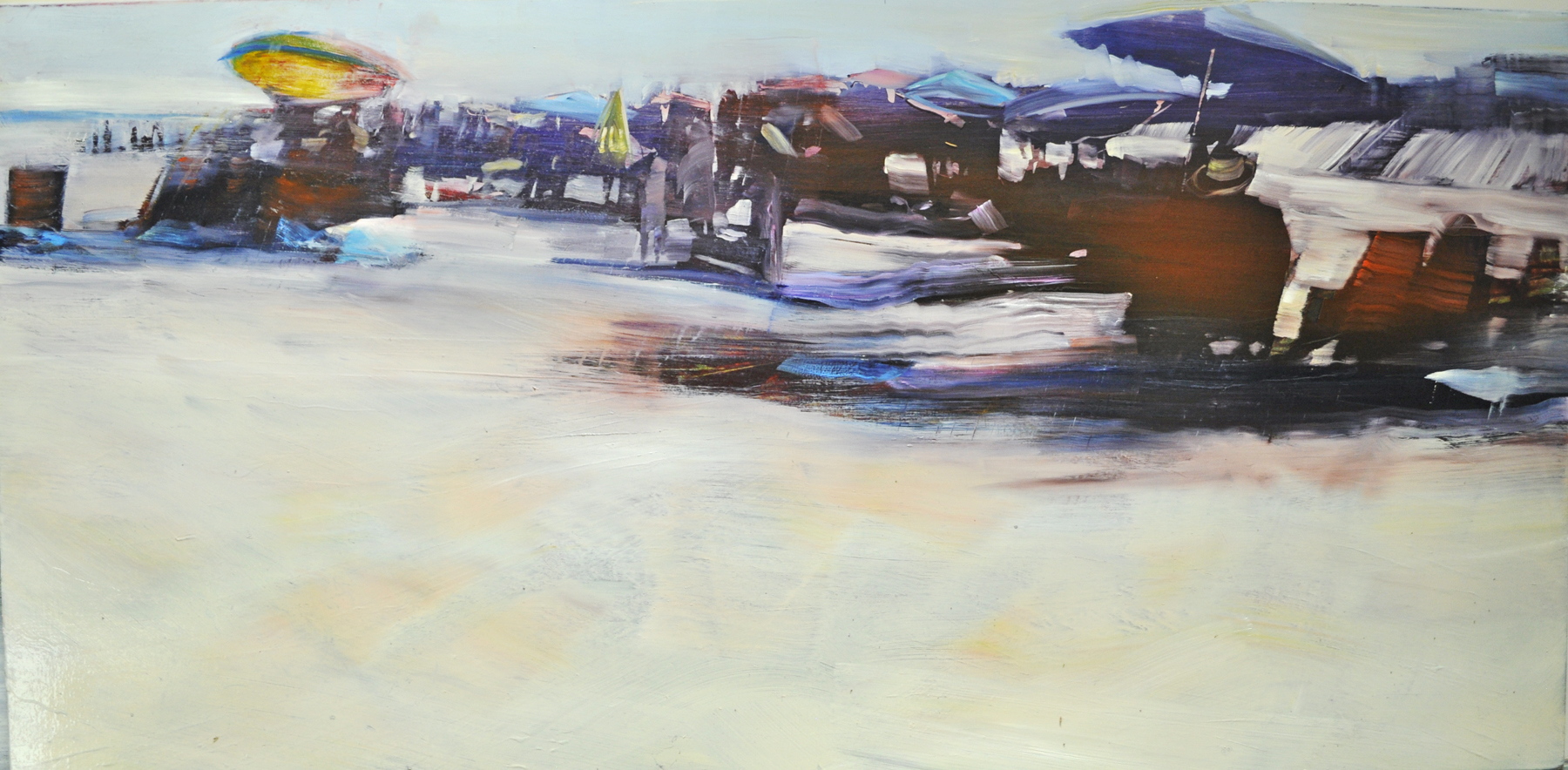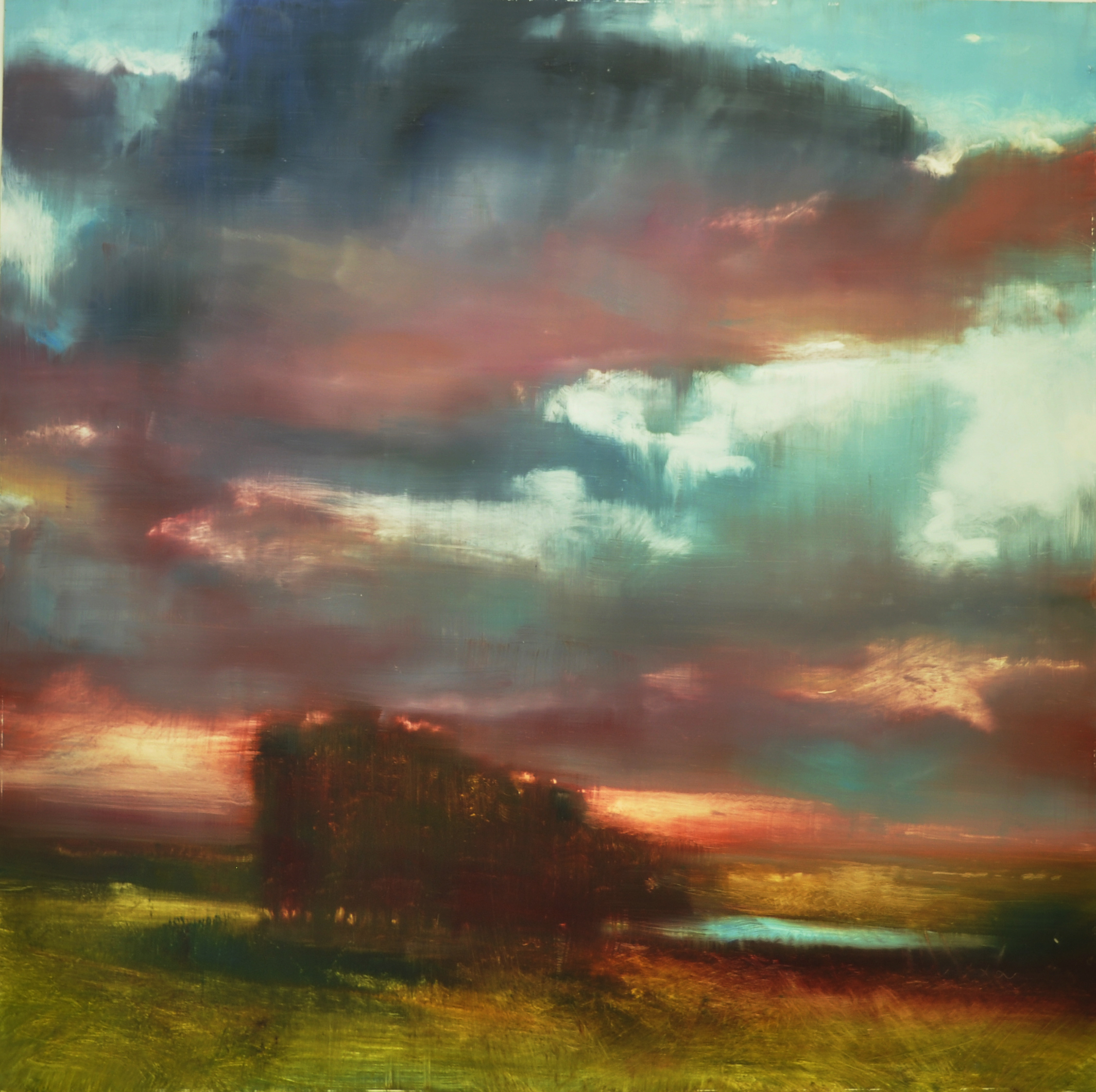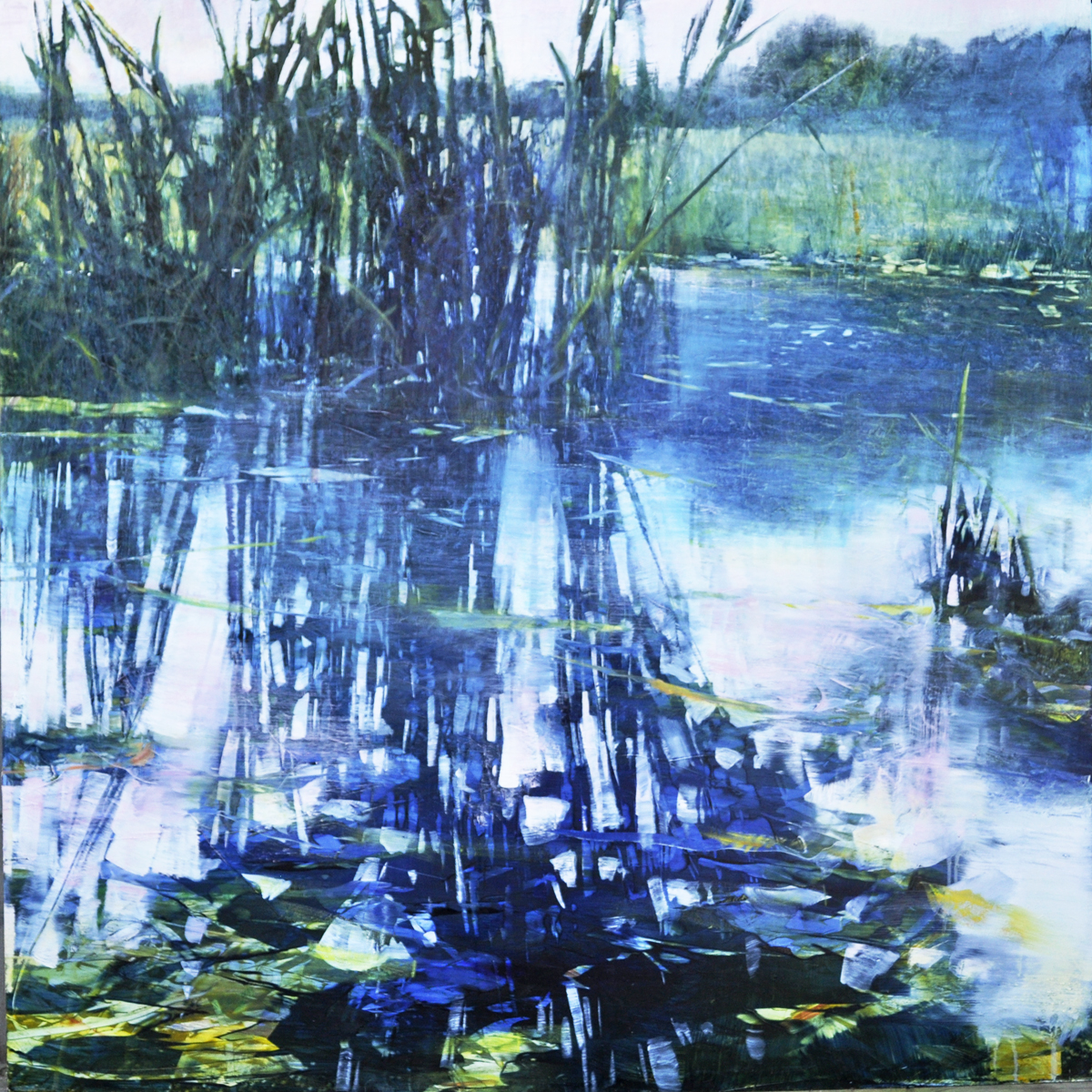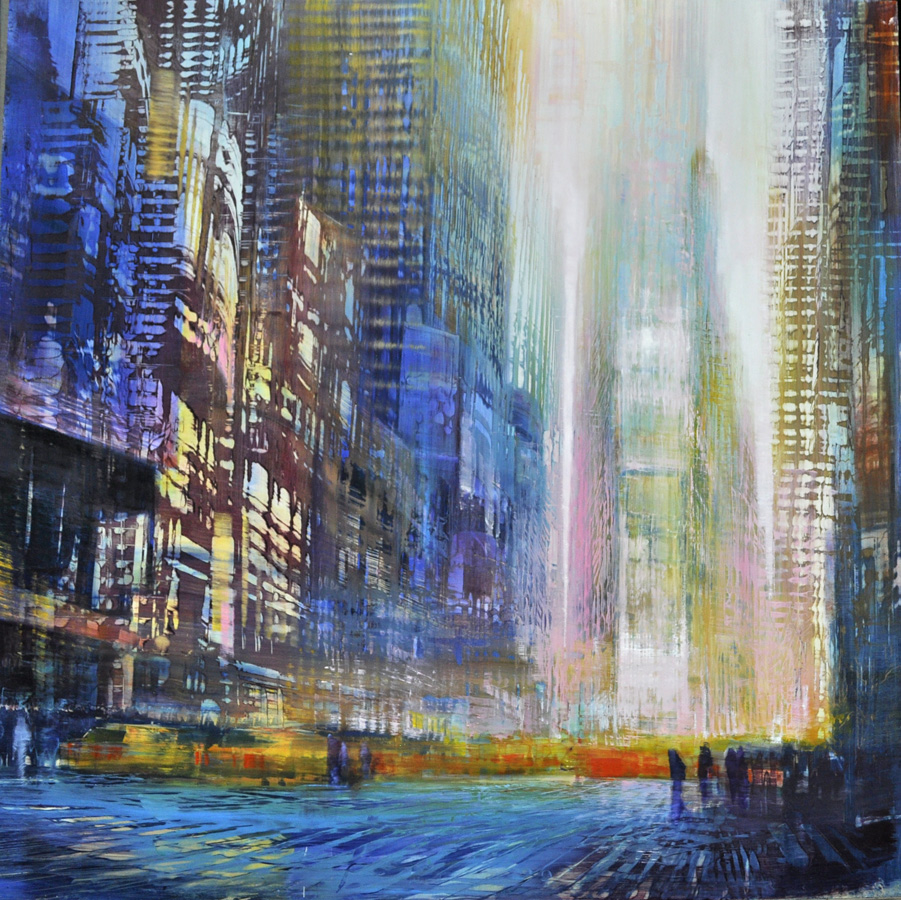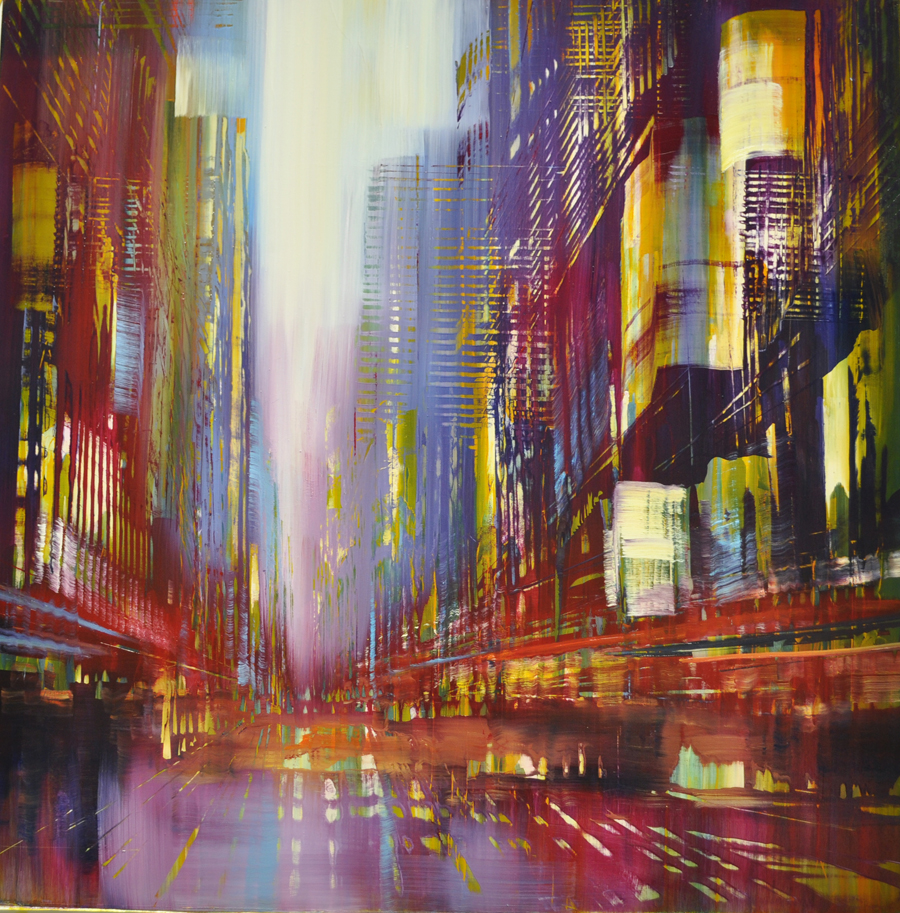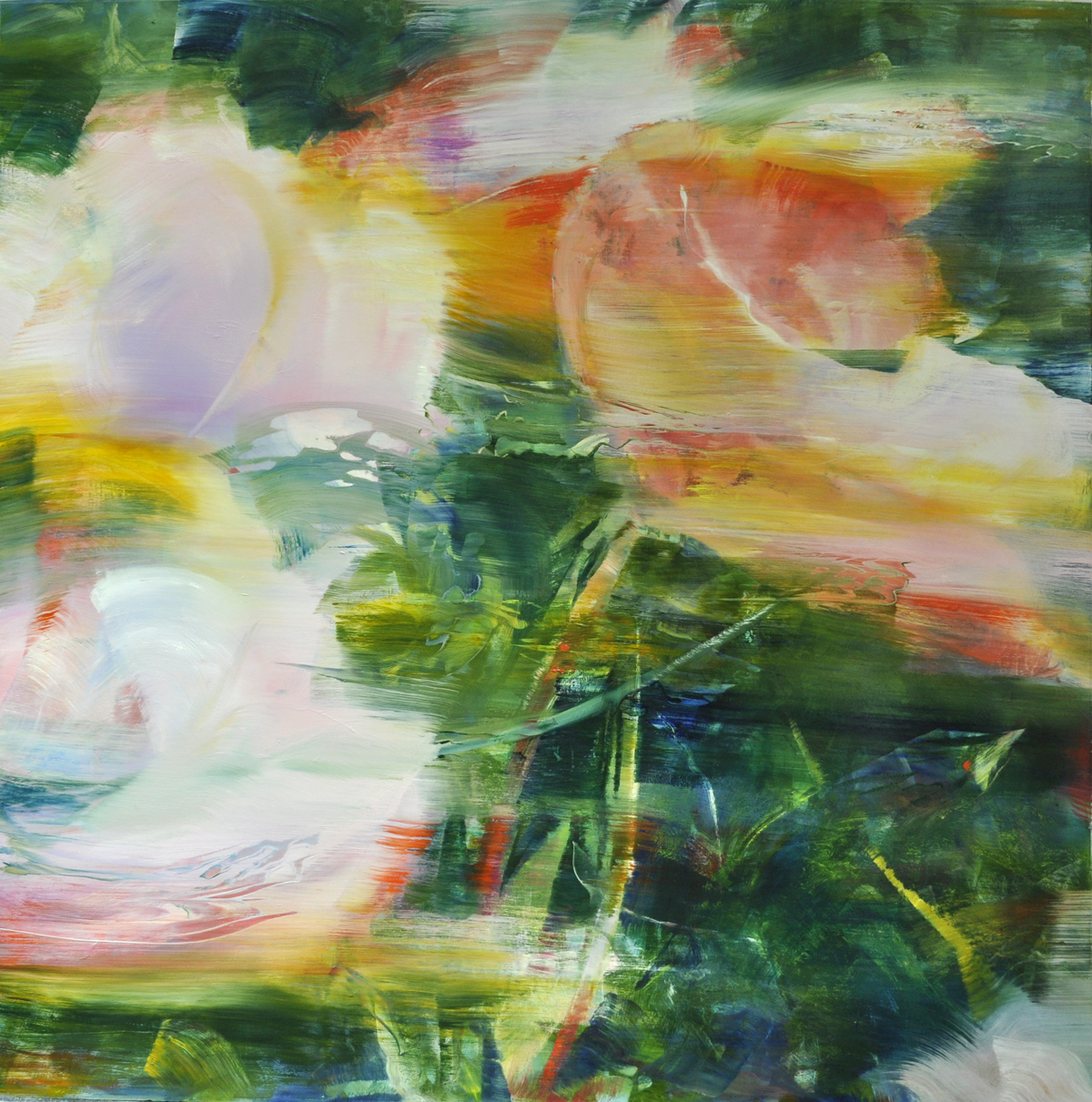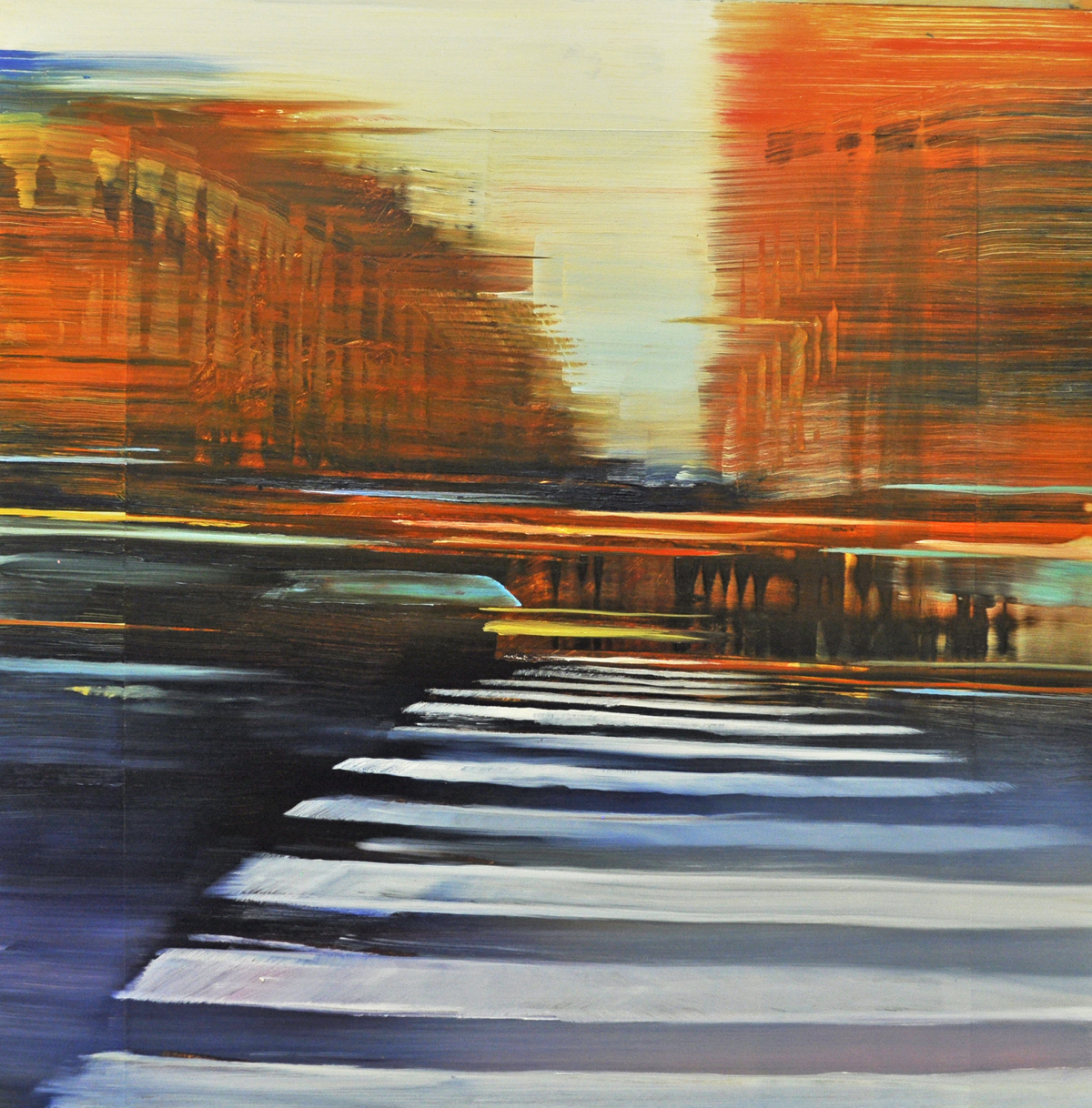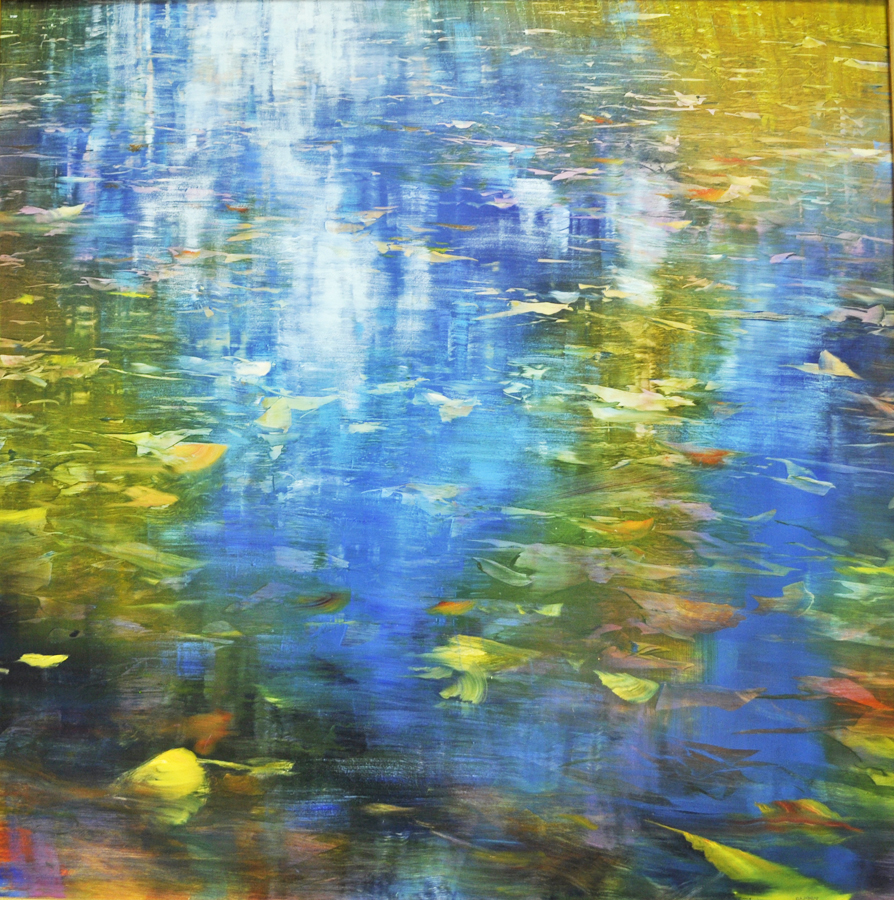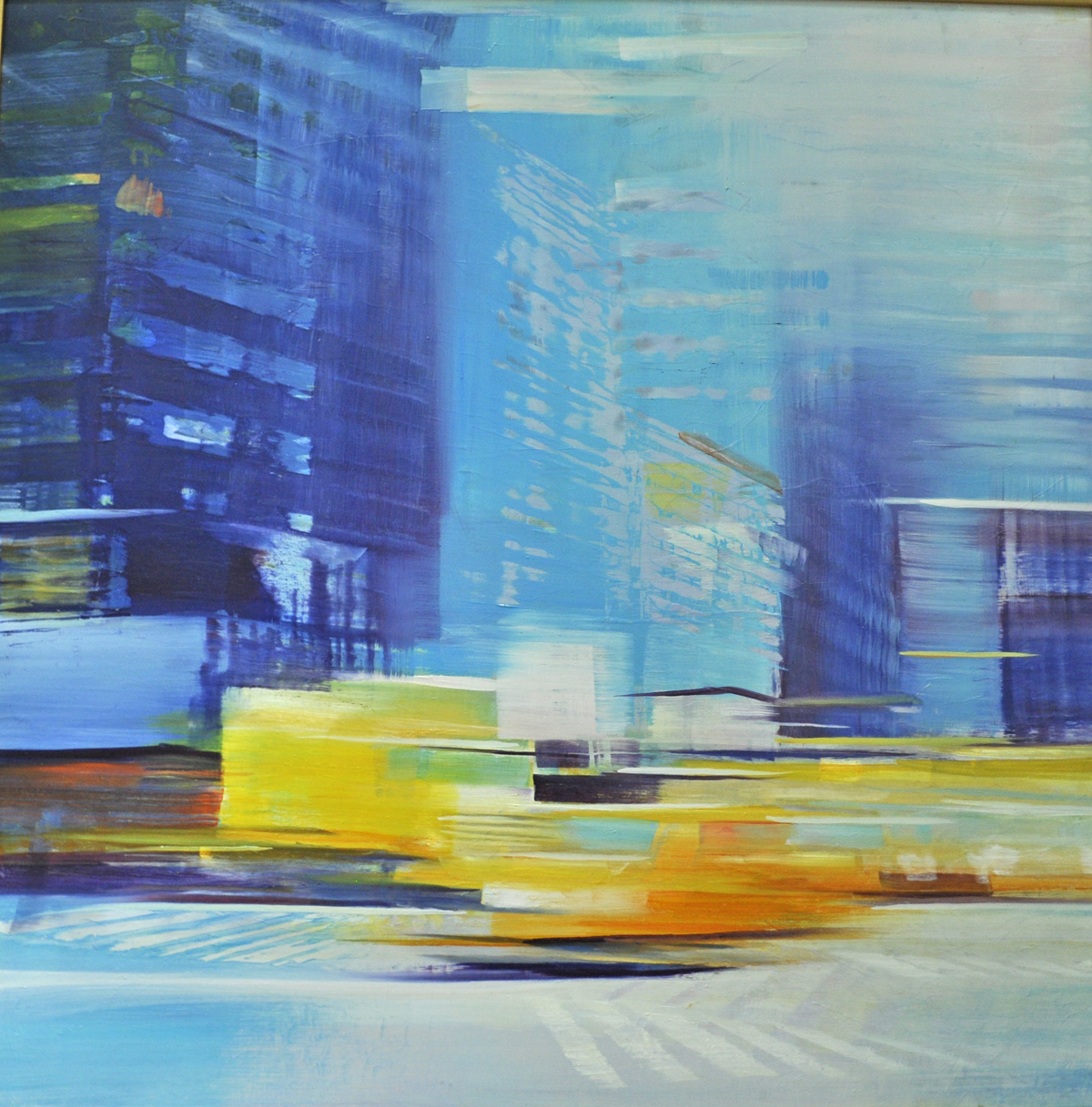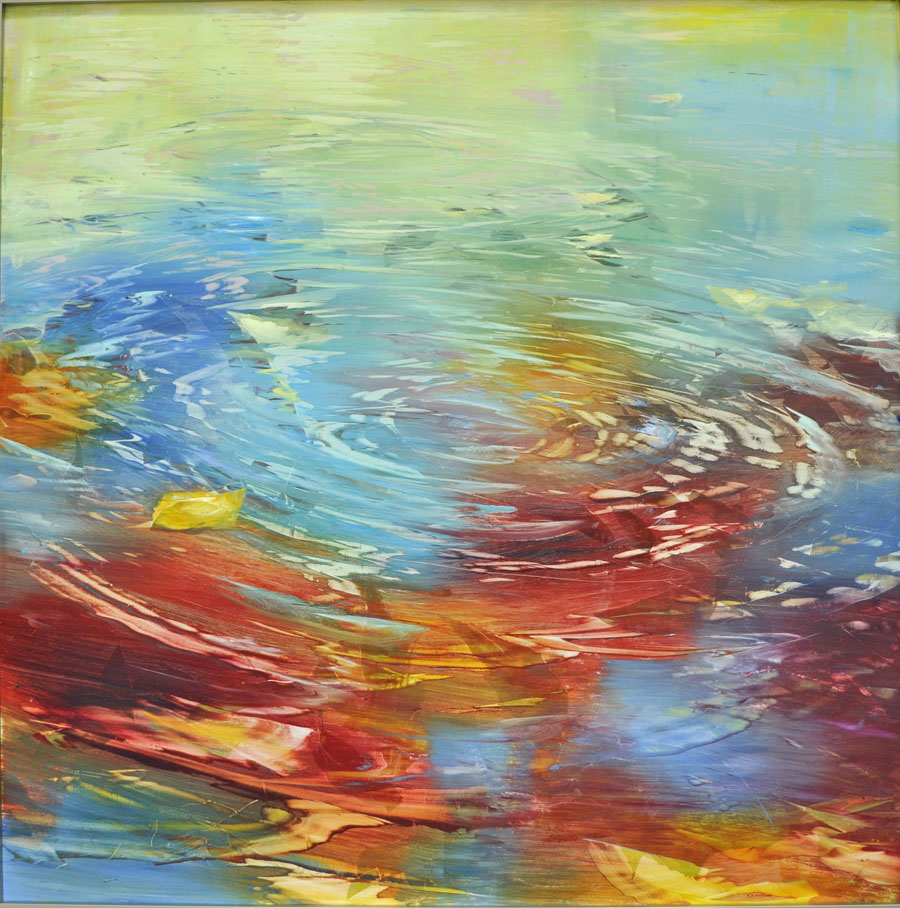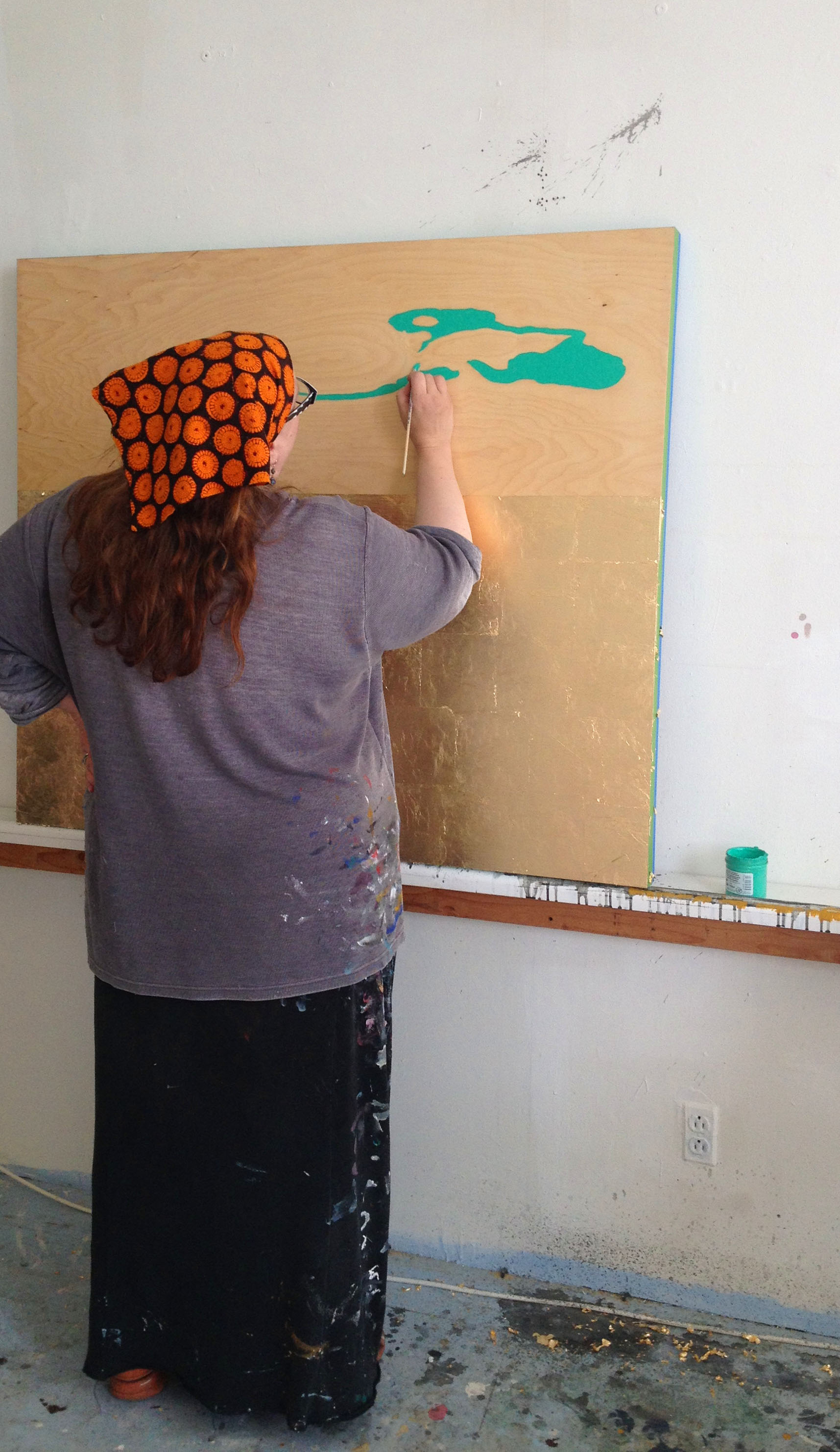Interview by taylor Evertsberg
“As a preface to The Drawing Room Art Gallery’s upcoming exhibit, Summer Group Show, The Drawing Room wanted their audience to get to know a little bit more about one of our featured and highly regarded artists, Michele Kishita. Michele’s dedication to her work is inspiring. She is living her own dream while at the same time, sharing what she loves with her students. Her love of Japan and Pennsylvania are displayed through her work as she states her most inspirational artists are Milton Avery, a modern American painter, and the Japanese printmakers of the 17th and 18th century, such as Hiroshige. Please enjoy our questions and Michele’s reflections of her own work, and stop by to see the upcoming show at The Drawing Room Gallery, opening Friday, August 9th.” – Taylor Evertsberg
Interview Transcript with Michele Kishita
By Taylor Evertsberg
July 22, 2013
TE: How would you describe your art to someone that has never seen it?
MK: That is difficult. I would typically say that my work is heavily influenced by Japanese art and that it is abstract and that it is color driven. I think that it is really hard to explain. But the recent work definitely has a lot of wood grain and the wood is very important. It always stumps me when people ask me what my work is like – it’s easier for me to pull out my phone and show them. My work is graphic, I use the liquid quality of the medium, like water, to do what liquid/water does naturally.
TE: Are you familiar with Ukioye prints, are you influenced by this?)
MK: I used to be a Japanese print specialist for an auction house, the daily interaction with prints was very influential in how I think about my work–the patterning and layering of kimonos in Ukioye, the flatness and graphic quality. It’s funny because I didn’t really think too much about Japanese art until after I came back from Japan – I live in a small fishing village, so didn’t see much art there, and when I came back and worked at the auction house and with the Japanese prints, I fell totally in love with them. I use shapes from Hiroshige and Hokusai; I trace off the shapes and use them in different ways throughout my works.
TE: Do you enjoy art history, did you study art history?
MK: I wouldn’t consider myself someone who actually studies art history, but when I worked for the auction house, Japanese art was definitely an obsession that I had. That came from wanting to know more and wanting to be better at my job. There were other things involved with it that stimulated me intellectually – for example, reading Japanese characters and being able to translate was an important part of my job, but more so was the character system of the old style of Japanese writing, characters that my husband doesn’t even know; I had to teach myself those particular characters because there just not the same, and they’re not translatable with the average Japanese dictionary. While I loved the work, I was driven by other things and understanding the stories and why those things were important. The other thing that I am very interested in that comes through my work, to some degree, is from the 40s and the 50s when the Abstract Expressionists came out, and the whole history of the 1950s and the anti communist movement. This was very interesting to me and that’s another thing that drives me intellectually and that is another thing that I use a lot in my classes and work. The idea that at that time artists looked inward to find their subjects rather than looking at things that were outside of themselves, is very interesting to me. And how Abstract Expressionists were used to show how free we are in America; they actually went to communist places and showed artworks that were actually pretty much hated here and referred to as communist to combat communism – that is fascinating for me. I don’t think there is any one artist from that time that is more important to me than another. Although, Milton Avery, who didn’t really like the Abstract Expressionists… I am really attracted to his shapes and the serenity that comes through his work, and he was around that time too. I think his work is a direct reflection of the desire for peace, because I think at that time it was very difficult, people were afraid of the bomb or afraid they were going to be attacked. I think it’s the serenity of his work, and then also he has a lot of stuff with his family. I think people found their peace in these kinds of things in his landscapes and through painting his family and through keeping the outside world at his doorstep. And everything is more family oriented. A lot of his landscapes were done on his family vacations which are interesting to me too.
TE: Other than Japan, what are some of the other places that you have visited that have influenced your work? Or just favorite places in general?
MK: Well I think Pennsylvania is a beautiful state and there is a lot here in this state that is really influential as far as the landscape. I have been to Peru which I love. Peru is amazing. And I’ve been to the United Arab Emirates, which I think is amazing. To say that there is a favorite, I don’t think there is a favorite for me. All are unique and different. Everywhere I’ve ever gone, the people are amazing. I’ve had really good travel experiences. I can find a piece of home or a piece of myself in every landscape no matter vastly different they are. I grew up in rural Pennsylvania and there was literally nothing for miles, I would just see rolling hills of green and vast expanses. And then in the UAE is a very similar landscape but it’s desert, it’s sand there’s no green but you still have that vast expanse. Even though it’s completely different, in terms of color and culture, it’s still the same landscape; it’s still the vast expanse. The overarching color was orange or yellow, and the overarching color of where I grew up was green. So it’s still the same landscape and I find comfort in that –that anywhere in the world you can find something that you understand.
TE: So you are living in Philadelphia now, is that because of your love for PA or is that for your job or both?
MK: I love Philadelphia. I’m just one of those people. I just think it’s a great city. It’s walk-able. It’s a friendly city. I think Philadelphia is amazing. It’s a very conservative art market so it’s difficult for me to actually thrive here as an artist, to be truthful but I love Philadelphia. After I had been going to school here for years (commuting from the suburbs), I moved into the city in 1998, and for the first time in my life, I felt like I was home. I don’t know why it is, it is vastly different from everything else I’ve ever known.
TE: So you think that you will stay there for a while?
MK: I have no intentions of leaving, ever.
TE: And you’re teaching right now, is that right?
MK: I am teaching. I teach first year writing to freshmen. This upcoming semester I am teaching a drawing class that is experimental, about materials and space. We’re dealing with different ways to think about the line. I have students doing GPS drawings, and drawings that are documenting their everyday. For example students will put a piece of paper on the kitchen table and it will be a document of their daily lives. So whatever happens on the table happens on the paper. So there’s a lot of different things. They’re engaging in non-traditional materials and how can we take those drawings and activate 3-dimensional space. I’m also teaching a seminar on beauty and that is for freshman only
TE: Do you ever struggle with your students?
MK: I do struggle with my students. I think what’s more and more difficult with students these days, and I’ve seen it exponentially as we go forward, is there are fewer boundaries between students and teachers so I think it is very difficult to teach students who do not understand that you are their teacher (there is a hierarchy for a reason) and its beginning to become more of a consumer situation which is very frustrating. I would have never questioned when I was in school whether or not I would have taken a particular teacher, I just assumed that was the teacher and you take that class, the end. But now it’s like a shopping list. Now students look up the teacher, they ask around about the teacher, find out their teaching style, because yes, they are trying to educate themselves but I think ultimately it’s more about who is easy and how can I get away with the least amount of work. It is sad. That for me is very frustrating because I care a lot about higher education; I think it is very important. I am not an easy teacher, and I never want to be an easy teacher and I think that the students who take my classes realize how difficult it is, and maybe they’re afraid of me – but I think in the end it is appreciated because they actually will have learned something, and for me ultimately, it is about learning. I care a lot about my students, it’s a fact, if they don’t show up for class, I worry about them. I do, I care a lot.
TE: Are there any other dream jobs you’ve thought about perusing other than being an artist?
MK: I’m living the dream! I am teaching, which I love, I get to be with creative people every day, the people I work with are artists, the kids are artists and then I get to impart my knowledge onto people. This is ideal for me. I love this situation. The only thing I would do differently, that would make it perfect, is that I would switch the ratio. So, more studio time and less teaching time. Just flip it, so that I would be in the studio 5 days and teaching 2 days.
TE: Is there a particular type of music you like to listen to in your studio?
MK: Sometimes I get into these jags and I will listen to one particular album over and over and over again all day long, that’s something I do, and I tell the people who are going to be in my studio with me that, that can happen, so bring headphones. When I was working on the pieces that the gallery has now I was in a Manu Chao phase, where that was all I wanted to listen to from the minute I walked into the studio till the minute I left. I was in a jazz jag for a while and all I listened to was bebop. And right now, with my new work, I listen to The Strokes Pandora station, and it essentially plays the same music over and over again and that is really the only thing I’ve wanted to listen to since March. That station gets played over and over again, it’s annoying I think for other people but I need stuff that is sort of familiar in the background, it’s comfortable.
TE: How do you choose your titles for your work?
MK: They tell me what they want to be, it is always like that. I will look at them, sometimes they tell me before they are finished and sometimes they come later and sometimes it’s really difficult but mostly they embody what they are so usually it is easy for me to come up with a title
TE: Could you please describe a little on your artistic process?
MK: It is different all the time, where I am and what I am doing. The pieces that the gallery has now, they start with light gesso, so that a lot of the raw canvas comes through and I start with large washes and let the paint do whatever it is going to do, it is very intuitive. I look at what is happening on the canvas and I start pulling some of the shapes out of it and highlight some of the shapes, getting rid of some of the shapes and just sort of phasing out what the painting is, through some of the large washes. It’s not completely intuitive, I will start out with a palette or something, say this one is going to be dark blue and silver and then I will start it, which is that particular kind. And then with the more recent work, I got the wood panels and the wood was so beautiful, that I almost didn’t want to paint on them, I was like – I am just going to hang these! And then I started looking at them more and thought I am going to use the wood grain. And I started using the wood grain, and I was thinking it was a completely different thing but actually it’s the same because obviously I am responding to the wood grain as if it was ripples on a pond and it made me fall in love with the wood, how closely it mimicked water, which I didn’t see initially but that kept happening. The difference there is that I have to do a lot of pre-thinking with those pieces, because when you let the wood show through, and when you’re only painting certain things, you have to make a lot of decisions before you even put a brush onto the panel because once you paint the wood, that’s it it can’t be unpainted.
TE: So when you paint the wood it’s a lot more planned out but with your paintings it’s a little more fluid?
MK: Yes, that is exactly right. The canvases are more intuitive and the wood panels are more planned, though that is not 100% true, with the newest work the panels and the canvases work together and they both are planned. The canvases are drawings essentially and they meet up in some ways with wood panels so in that case there is a similar process. The canvases on their own are more intuitive and the wood panels are more planned. I’ve started some new stuff too that is about chance, it is a “controlled chance” though by the way. I’m doing some very different stuff right now.
TE: And is painting your favorite medium to work with, or is it the wood or is there something you prefer?
MK: For me it’s about acrylic paint and latex and these kinds of things. I hate oil paint. I think it is beautiful and I am excited about the people that use oil paint and the work that I see, but I just can’t use it. I am too impulsive. It always turns to mud. If I see something I don’t like I have paint it out, it’s just a completely different process. And I don’t like the smell! As far as what I like to work on, I like to work on canvas and I like to work on wood panel as well. But I never really stop at painting on something, there is typically a collage aspect and that has been around for a really long time for me. Even as an undergrad I couldn’t think of the painting without something on it. In the paint I am very reductive. I like to put a lot on and then I like to reduce it and reduce it to simple shapes. It always starts out as a mess and then I like to bring it back to the essential shape and take out everything. Then in that way it is very reductive. But also, I like to put stuff on. So in that way I am very additive. There are very few paintings were I do not put any collage. I am driven to stick stuff onto my paintings
TE: That is cool, it is both reductive an additive, I really like that about the way to you describe your work.
TE: What is the biggest struggle in perusing a career as an artist for you?
MK: I think today, for anybody, the biggest struggle is trying to balance a job and your practice. There are very few artists, I think, that can make a living solely on art these days. I need that steady income coming in, without it I have no practice, art supplies are expensive. When I do installations, every installation I’ve done, no matter how seemingly simple it is, it costs a minimum of $3000 and that money has to come from somewhere. So for me, it’s about striking balance, between the real world financial situations and being in the studio.




